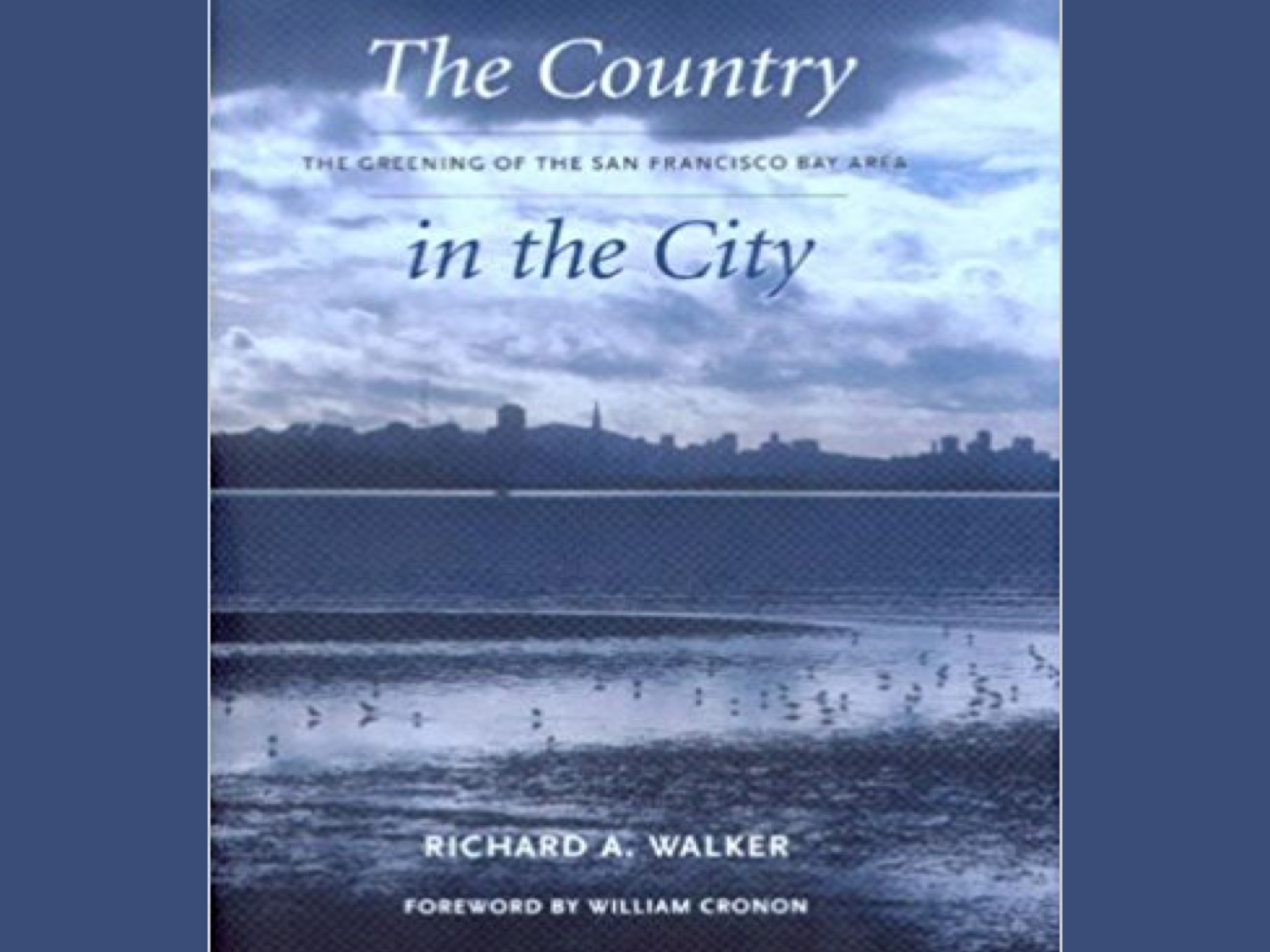“Country in the city” is a good book since the author managed to connect environmental dimensions with historical evolution and laid out the relation between country and city in allot accurate and genuine way than the typical generic misconceptions simplifications by other scholars.
He started by drawing the continuum of “country–city “and how the line between both is moving according to dynamics from both poles and how agro-business supported the city and vise versa.
He covered all aspects that may, directly or indirectly, affect the process in which environmental change occurred in the history of the bay area.
The connection between social classes and their role in either admiring/protecting the environment or expanding over environmental resources was reasonably laid out, as it is an important factor in interacting with nature. Also brining the gender dimension was an essential one to understand. In his words (men wanted a profitable city & women wanted livable city) he made a clear distinction between different causes that might lead to a goal and when is this goal (a common one) and when in other times it was not. He also showed how that the idea of protecting the environment could have an economic value (i.e. the Big Basin park was sold to local businesses as it will bring tourism and money).
It is also highlighted that despite the class level and the different reasons for all these environmental activists to play an advocacy role, the genuine attempts were more successful in preserving nature, those come from women out of care about their children or middleclass handworkers whom believed that more change/distraction to the environment will affect their quality of life beyond the loss of a good scenery
Consistent enough with other literature, transportation had a great effect on how cities and countries evolved, this is in a form of directly affecting the production of crops and related businesses.
The dynamics of the city expansion/growing, farmers started to find alternative destinations to farm and this had a direct effect on the land use change. In addition to this growth and more with the industrial and mass-production trend, the requirements for livestock had changed and the production pattern had its effect on the city in terms of location of activities and modes of operation.
Although the Bay Area is one of the leading areas in maintaining nature and greenery, and although some watershed are still protected till now, the writer managed successfully to convey the message that with the city evolving process the less nature is maintained and more need for firm protection measures for the environment there for more need for regulations and parks boundaries
After meeting Richard Register (one of the pioneers in environmental preservation mentioned in the book) and after visiting the Creek site project, it is sad to see such good intentions are more limited to “Pilot Projects” rather than a general trend. And, as mentioned in the book, the regulations is slightly changing for the failure of developers (i.e. set back from the Creek was 30 feet reduced to be 25)
The bay area seem to be incredibly rich in all natural resources,: flora, fauna, geology, geomorphology, scenic areas, mineral wealth, forests, livestock,… and allot more. Their book simply put such wealth and reasonable context and
Golden Gate park took a lead after the NY Central park, but with regard to attracting visitors, the comparison between allowing activities that generate visitors and collect revenue from the taxes or maybe apply tickets for visitors.
Parks increased in the bay area out of power of state and availability of resources not as a direct result to environmental activism, which shows how politics and capital can play a role in improving or eliminating park systems. In addition, the author argues that the environmental movement has reversed a century of environmental degradation, which is a difficult assessment to make as it assess the environmental movement effect in absence of assessing it is possible potential and the amount of resources/energy/time that had been put in it.
Several unpredictable other factors affected the formulation of park systems and the land use surrounding it such as: (i) privatizing army lands, (ii)real estate developers business trend, (iii) availability of loans and access to finance, (iv) institutional and policy change in the form of introduced zoning regulations
Different disciplines/specializations helped increasing the advocacy for environmental values and raising awareness of challenges facing nature, students, journalists, public administrators, scientist, … all played a role in environmental preservation as citizens and this shows that the responsibility is not only on the environmental planners shoulders. (Interesting enough, most of these active calibers are related in a way ort another to UC-Berkeley)
The book in general touches on environmental changes and brings values and lessons to learn, however it went into details history by name and place at certain times towards its 2nd half which increases the emphasis on (absolute history) more than (nature processes). Despite this specific point, it gives a good projection on how distinct the environmental assets of the Bay Area from other greening attempts in the country.



